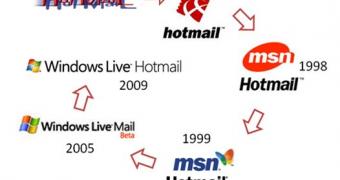While it has long preached the superiority of Windows-based servers over those running rival platforms such as UNIX and Linux, Microsoft only moved its email service to an infrastructure running Windows Server some six years ago. It was only in 2004 that the Redmond company swapped UNIX for Windows Server, when the entire Backend of Windows Live Hotmail was rewritten. Of course, at that time, Windows Live Hotmail was referred to as MSN Hotmail. Only in 2005 did Microsoft rebrand its email service as Windows Live Mail, which was subsequently labeled Windows Live Hotmail, in an attempt to marry the Windows Live and Hotmail brands.
“Starting in 2004, the Hotmail engineering team completely rewrote the Backend system, moving it off of an expensive and dedicated Unix-based storage system and onto a system that uses Windows Server and SQL Server to exploit inexpensive, commodity computers and disk drives so we can provide users with far greater storage limits than had ever before been possible. The scope of these changes was immense – we had to physically change the hardware in the data centers to new hardware running new software, and we had to move the data from the old system to the new system with no interruption of service to our customers,” revealed Dick Craddock, the group program manager for Windows Live Hotmail.
Among the many sub-systems of Windows Live Hotmail, the Backend system is designed to store all end user data. In this regard, the Backend is completely separated from the Frontend, Craddock emphasized, noting that this allows the company to work on both systems independently. In this regard, while the Backend evolved in 2004, the Frontend was only pushed to the next level the following year. In 2005, Microsoft the Hotmail engineering labored to rewrite and rebuilt Hotmail and Calendar completely.
“The old software was written in C++ and Perl, and it had served us well for many years. But the team knew that we needed to rewrite the services in a modern, managed language in order to take advantage of new technology being developed by many other teams at Microsoft. So, the entire Frontend was rewritten in C# and ASP.Net, and leveraged Windows Server and the latest version of IIS – Microsoft’s web-server – to bring Hotmail into the modern world,” Craddock added.
In the image at the top of this article users can see the evolution of Hotmail from 1996, when it was actually called “HoTMaiL,” and leveraged HTML for the web user interface. Microsoft only bought Hotmail at the end of 1997 and integrated the email service with a web-based calendar service, dubbed Jump. Initially, Hotmail users could only take advantage of a 2 MB storage space, a figure which has grown with Windows Live Hotmail and which no longer limits the amount of content that end users can store.
“Over the last several years, the Hotmail team has re-engineered the service from the ground up while growing Hotmail at an astounding pace. We’ve made critical investments to get our software where we want it to be and to give us the ability to deliver great features, great performance, great reliability, and great integration across Windows Live,” Craddock stated.

 14 DAY TRIAL //
14 DAY TRIAL //